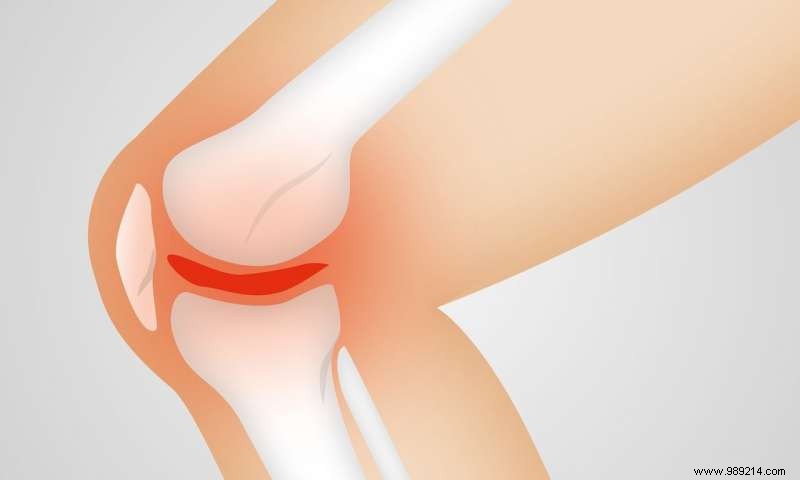A recently discovered molecule would have allowed the regeneration of bone and cartilage defects as well as the relief of symptoms in animals suffering from osteoarthritis.
With age or following injury, the cartilage that covers the ends of our bones cracks, crumbles and eventually disappears. These lesions, which rarely heal spontaneously, can then lead to the development of osteoarthritis. It is one of the most common types of arthritis. In France, it is estimated that this disease affects between nine and ten million people, or 17% of the population .
It is now possible (but not always) to relieve pain with anti-inflammatories. And unfortunately, there is currently no way to "repair the damage". But who knows, maybe one day?
For the past few years, a team from Queen Mary University of London has been working to develop ways to encourage cartilage healing in animals with osteoarthritis. As part of this work, the researchers are focusing in particular on one molecule in particular:Agrin.
Specifically, the researchers noticed that when implanted in the cartilage, this molecule allows to activate certain dormant stem cells in the joint . Once awakened, they then promote the repair of lesions.
So far, only studies in mice and sheep have been conducted. However, this research is promising. In sheep, in particular, a single administration of Agrin into the cartilaginous defect seemed sufficient to trigger repair and increase the activity of the animals during the six months of the study.
“Other methods have been developed to make new cartilage from cartilage cells or stem cells. In contrast, all involve removing these cells from patients' knees, growing them, and treating them in the lab with various substances to induce them to make cartilage and implant them back into the joint “, writes Suzanne E Eldridge, lead author of the study, in The conversation .
"This process is laborious, expensive, and yields inconsistent results . Our approach skips all those steps" , she assures. “The stem cells are already there, in the knee. We have learned to "talk to them" using a molecule. In this way, we got them to do their job efficiently without having to take them out of the body “.
Another important point:unlike other molecules already tested, Agrin would induce the growth of cartilageonly where it is necessary . The researchers also pointed out no obvious side effects , both in mice and sheep.
The researchers now intend to continue this research before considering, in a few years, the first clinical trials. This early work was indeed carried out on recent injuries and on relatively young animals . Also, the researchers will have to make sure that the technique also works on older individuals and on older traumas.
“Our goal is to make osteoarthritis a curable or at least preventable disease. If this approach works in humans, we expect that a simple knee injection or keyhole surgery will be enough to heal cartilage defects and prevent further damage “, writes the researcher.

The same team also found that a molecule called ROR2, absent from healthy cartilage, is usually produced after injury. We also know that it contributes to the breakdown of cartilage in osteoarthritis. Also, they naturally wondered if blocking this molecule could help relieve osteoarthritis .
In another study, they were able to stop mouse cartilage cells from producing ROR2 using a technique called "RNA gene silencing". The subjects concerned would then have been protected “to a certain extent against additional wear. Researchers also found quick and clear pain relief .
Here again, the team intends to repeat these studies before considering the first clinical trials in a few years. Suzanne E Eldridge is well aware that it can be frustrating for osteoarthritis patients to find that there is not much we can do at the moment. “It is a dream to be able to provide medical treatment that can bring these patients back to their work, their hobbies and a fulfilling life " , she says. "We hope that all our efforts will finally bear fruit “.